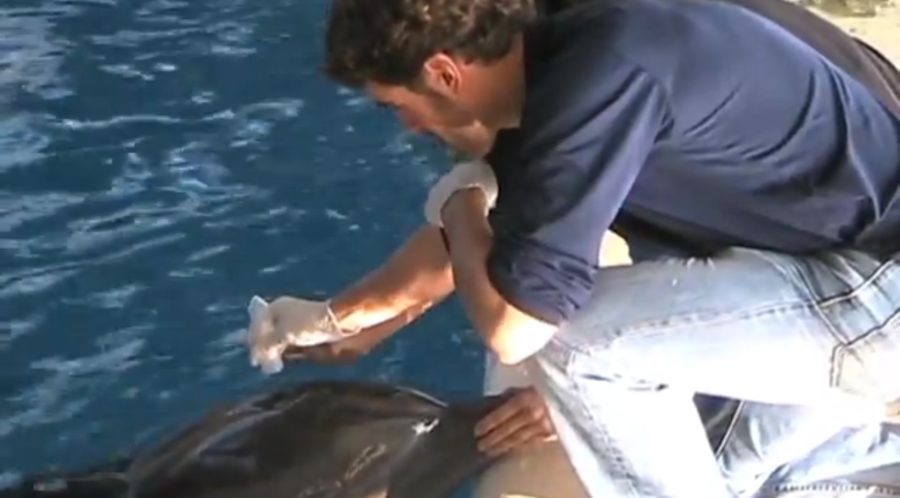Dolphin breath gives up genetic clues

IT MIGHT SMELL OF fish, but dolphin breath is surprisingly useful for gathering information about the animal’s genetic make-up, according to new research.
Collecting dolphin DNA in the exhaled air and saliva from their blowholes is less invasive than the current dart-biopsy technique presently used, Australian and US scientists say.
“Biopsying does have a place, but sometimes it’s inappropriate,” says evolutionary biologist Celine Frere from the University of Queensland, in Brisbane. “It’s about trying to find complementing techniques to…minimise impact on animals.”
The DNA can be used to complement behavioural information and data on population sizes to determine the conservation status of whales and dolphins.
Thar she blows!
Surprisingly little is known about the composition of ‘blow’ (the mixed air and saliva), as scientists have rarely had the chance to study it, Celine says.
A range of other techniques for collecting the blowhole substance have previously been trialled – such as skin swabbing and faecal sampling – but they had failed to gather sufficient quantities of DNA. The mystery substance may contain hormones that could be used to determine whether a female is pregnant, she says, and fatty acids that provide clues about a dolphin’s diet. “It’s probably a really good biological substance to study.”
The team’s research, which is detailed today in online journal PLoS One, began about a year and a half ago with the wild dolphin population at Monkey Mia, Western Australia. Samples were collected using petri dishes, which were attached to poles long enough to reach the dolphins as they swam alongside the research vessel.
A whale of a research time
The research was then perfected using six bottlenose dolphins at the National Aquarium in Baltimore, USA, that were trained to exhale on command when tapped on the head. (See video below). Researchers were able to collect both blow and blood from the aquarium dolphins, who nuzzled patiently while samples were taken. The team found that DNA taken from the blow matched that taken from the blood, indicating that the method is a reliable source of dolphin DNA.
The method could also be used to for whales, says Celine: “Their large size and volume of blow would mean taking samples ‘would be a walk in the park’ compared to working with smaller animals such as dolphins.”
Dr Lars Bejder from Murdoch University says the biggest breakthrough could be for larger whales, whose expelled blow is easier to collect. He says the method could potentially be extended to other marine mammals, such as dugongs.

